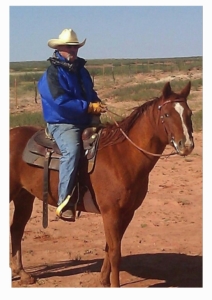A Tabletop Exercise: A Survey Within a Survey
Guest writer David Jensen continues to make observations from rural New Mexico with “A Tabletop Exercise: A Survey Within a Survey.”
As a first responder in the Fire Service, a firefighter learns the value of a tabletop exercise. An actual tabletop containing several buckets of sand provides the platform for creating a simulation of a wildfire incident. We survey any number of data points (weather, topography, fire behavior) to build a simulation. The simulation only comes to life when you match the data points with a small relevant set of behavioral questions. The questions form the tabletop exercise. The choices presented on the tabletop are neither right nor wrong. The questions do require a behavioral answer. In effect we are conducting a survey within a survey. When you conduct the tabletop exercise, the data points (survey 1) translate into actual behavior (survey 2) on the ground during the fire simulation. The exercise allows you to drill down to the decision-making tree of the Incident Commander. The survey within the survey.
As an HR Professional, I again experienced the importance of a tabletop exercise built on behavioral questions. As an example, a key HR deliverable was a location-wide employee satisfaction survey. The initial data collection was outsourced to an independent collection service. The extensive surveys covered many aspects of employee satisfaction ranging from pay and benefits to the choices in the vending machines in the breakroom. Upon completion of the survey, the collection service would provide a vast amount of data. The data dump was not the end of the process, it was the start. After reviewing the data, a tabletop exercise would be assembled to be used during the follow up with small group employee meetings.
The tabletop questions would provide an assessment of the motivation and the concerns of the small group. The survey within the survey. The tabletop was the link between data and behavior. The issue regarding choices in the vending machine may really be about a manager’s unacceptable behavior.
The tabletop exercise with a few relevant behavioral questions can be applied to a variety of data collection efforts. Our legal system is a discovery phase leading to a court room tabletop exercise. The foundation of effective job interviewing is asking performance and behavioral questions drawn from a resume. The survey within the survey. The value of a 360 supervisory assessment comes to life when you follow up with an effective tabletop exercise with the supervisor receiving behavioral coaching. Paper and pencil inventories concerning personality, values or ethics become useful when followed up with and validated by a tabletop exercise. Again, a survey within a survey.
In some circumstances, a short concise tabletop exercise may stand in place of extensive and expensive data collection. The right set of relevant questions can identify trends that will point you in a direction. Recently, I developed a tabletop exercise that asks a small number of behavioral questions. The possible answers trended towards an experience-based solution or an option-based solution. The provided choices were neither right nor wrong. How participants responded was then matched to data on individual participant success in one-to-one customer communication and customer retention. A survey within a survey.
Bottom-line; in this era of super computers and AI, a few relevant questions presented using a tabletop exercise in a person-to-person encounter should not be overlooked, it should be embraced. It is the person-to-person conversation found in the tabletop exercise that translates data into behavior.

